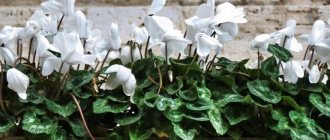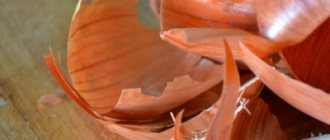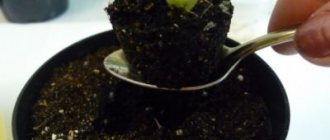I want to collect as many compact plants with patterned leaves, strewn with butterfly flowers - white, pink, red, crimson, with simple or fringed petals. In good conditions, cyclamen will bloom year after year.
- Cyclamen's dormant period
- How to distinguish Persian cyclamen from European cyclamen (purple) Signs by which you can distinguish types of cyclamen
Description of the flower
Reference! Cyclamen, also known as dryweed or Alpine violet, is a popular houseplant belonging to the Myrsinaceae family, with about 20 of the 60 species intended for growing at home.
This flower has leaves that are heart-shaped and dark green with silver streaks or other patterns.
Cyclamen also has a variety of flowers: with fringed, curved and variegated petals. The color palette of the plant is very wide due to the many hybrids obtained . From snow-white flowers to pink, maroon and purple. The flowers are located on a peduncle reaching a height of up to 30 cm, and in dwarf ones - up to 12 cm.
All the main components of the flower are tilted down, and the petals, on the contrary, are bent up. At first glance at cyclamen, its flowers can be compared to butterflies that circle above it, because there are quite a lot of them: up to 60 can appear on one plant.
The main feature of this indoor plant is its flowering period , which occurs during the cold season, and some species can even emit a pleasant light aroma.
How to choose cyclamen when purchasing
Finding a new apartment occupant is very simple.
Decorative alpine violet is sold as already grown seedlings or nodules. Seeds are also available for sale, with a particularly wide range of Persian hybrids. To avoid disappointment with your purchase, carefully inspect the copy you are purchasing. Avoid purchasing bushes with damaged leaves or nodules. The bush should be quite dense and well leafy. A healthy plant is characterized by the absence of spots, plaque or sliminess on the foliage and bulb. If traces of pests or fungi are found, refuse to purchase. Such individuals will soon wither away on their own and infect your indoor flowers.
Pay attention to the tuber. If it is already planted, then the top of the head should look out a third, because European cyclamen are not sold for sale, only “Persians”. When purchasing a dormant tuber, make sure that the growth bud is viable and there is no damage to the bulb. Good corms are dense and weighty and have no signs of spoilage. Select seeds only with a fresh harvest date; after a year and a half they will partially lose their germination capacity.
Photo
Let's show what this flower looks like:
Why do the leaves curl?
Why cyclamen leaves curl is a question that interests many gardeners. One of the possible reasons is the conditions of detention: high air temperature or too low humidity. Another reason is cyclamen mites, which can be detected by turning the leaf over. Ticks form a whitish coating. Pests slow down the growth of the flower and cause the leaves to begin to curl. If there is excess moisture in the soil and little light, uninvited guests will not keep you waiting long.
A wilted flower can be saved by treating it with acaricides. Insecticides are powerless in this case. Then the flower is isolated and normal conditions are created.
Leaves sometimes curl due to lack of nutrients. This problem can be easily solved if you simply feed the plant. Foliage can dry out because there is a lot of light, dry air, and high temperatures.
Alpine violet during hibernation
The dormant period of cyclamen is the time when the plant gains strength in order to bloom later.
Contrary to all the laws of nature, when in the summer almost all plants develop and grow intensively, delighting us with their flowers, cyclamen has a dormant period when it is restored.
Depending on how well the plant rests and how it replenishes its reserves of strength, its subsequent flowering period will depend. If some conditions have not been met, then the awakening and appearance of new flowers will be a rather problematic process. To do this, it is enough to properly care for the plant bulb so that it does not die .
One of the most accurate signs that cyclamen is going into hibernation: its leaves will become limp and then turn yellow. Then it is necessary to reduce watering, fertilizing and lighting.
When does cyclamen wake up? Many inexperienced gardeners do not know when exactly it is necessary to bring a flower out of hibernation, but this is not a problem, because the plant bulb itself will “notify” this by the appearance of new young leaves. And as soon as this happens, it is necessary to quickly restore the conditions in which cyclamen was previously grown: increase lighting, watering, fertilizing.
There is no clearly established time period when cyclamen goes into hibernation . Most often this happens at the very beginning of summer and continues until August or early autumn. On average it lasts 2 – 3 months. And sometimes it can start in April and end only in September. Everything depends solely on the rhythm of life that cyclamen sets for itself.
Frequently Asked Questions: Cyclamen
Home / Frequently asked questions| General information on caring for cyclamen. Photo: WELTKIND, Ukraine. |
- Please explain the difference between cyclamens, Persian, European and Neapolitan.
- Is it necessary to retire cyclamen?
- Is it true that during the dormant period cyclamen drops all its leaves?
- Is it necessary to put cyclamen in a dark place after flowering?
- Is it necessary to water cyclamen during the dormant period?
- When should cyclamen “wake up”?
- When the temperature rises above 12 degrees, the leaves turn yellow and the small buds dry out. How to accustom cyclamen to higher temperatures?
- They gave me a cyclamen - big, beautiful. When is it better to replant it and is it necessary to do it at all?
- I have cyclamen grown from seeds (planted in February) and replanted in the summer. At first he released small buds, in November they took off and dried up, but he went to throw away the leaves, which he still continues to do... The conditions of detention have not changed. With what it can be connected?
- I also have a small cyclamen grown from seeds. Sowed in August. It now has 4 leaves. Does it need to be replanted? It’s clearly not crowded in the pot; it’s growing slowly. And are there any “special” recommendations for caring for such babies?
- My 4 chickweeds sprouted 3 months ago, but they still have one leaf on a long stalk (about 5cm), and no more leaves appear. Is there something wrong?
- How do you know that the cyclamen has become too crowded in the pot and it’s time to replant it, and what size pot should you choose?
- Do you always water from a tray? Or can you carefully water the soil from above...?
- How does cyclamen start to grow?
- About a month and a half ago I sowed cyclamen plants, 7 seeds, 2 sprouted. What should I do next, how to water, when to replant.
- I have some kind of strange cyclamen growing: at first it bloomed, without leaves, with tiny lilac flowers. It began to bloom in early summer and finished blooming in August. Then it began to grow leaves. What kind of variety is this?
- Cyclamen's buds dry out and leaves turn yellow. Why?
- When is the best time to sow cyclamens? What kind of soil should it be - oily or not very oily? How long should I wait for germination?
1. Please explain the difference between cyclamens, Persian, European and Neapolitan.
Answer:
Nepolitan cyclamen is a species plant and can be grown in open ground. It blooms in autumn with pink flowers, and the flowers appear first, and after flowering the leaves grow. The tuber is flat with a corky surface, the leaves are oblong-heart-shaped, with a silvery pattern on top. The roots are located on the top of the tuber, so it should be buried in the soil.
Persian cyclamen is the most common in indoor culture. Blooms from autumn to spring. The tuber is spherical, tuberous on top, up to 15 cm in diameter, the roots extend from the bottom of the tuber. The leaves are heart-shaped (up to 15 cm in diameter), with a silver-gray pattern on top. The flowers are mostly pink.
Answer: Nepolitan cyclamen can be grown in gardens. Blooms in autumn. The flowers are pink, the tuber is flat with a corky surface, the leaves are oblong-heart-shaped, with a silver pattern on top. In nature, Neapolitan cyclamen (Cyclamen ivy, or Neapolitan - C. hederifolium = C. neapolitanum Ten. = C. linearifolium Dc) bloom in September-October, and the flowers appear first, and after flowering the leaves grow. The roots are located on the top of the tuber, so it should be buried in the soil. Persian cyclamen is the most common in indoor culture. Blooms from autumn to spring. The tuber is spherical, tuberous on top, up to 15 cm in diameter, roots extend from the bottom of the tuber. The leaves are heart-shaped (up to 15 cm in diameter), with a silver-gray pattern on top and green below. Flowers vary in color from pink to lavender and white with purple spots at the base. It has a dormant period and requires a cool temperature. Propagated by seeds.
European cyclamen is an evergreen plant that does not shed its leaves and does not have a dormant period. The leaves are much smaller than those of Persian cyclamen (diameter about 2-4 cm). The flowers are also smaller, mostly pink in color and with a pleasant aroma. The tubers are about 10 cm in diameter, spherical or irregular in shape - elongated, elongated, flattened, with roots located over the entire surface. Unlike Persian cyclamen, it grows well throughout the year on windowsills at a temperature of 18-20 ° C and an air humidity of 30-35%. Propagated by seeds and daughter tubers.
2. Is it necessary to retire cyclamen?
Answer:
Hibernation occurs in May-June. If by this time the flower does not fall asleep, then there is no need to forcefully put it down. You just need to protect them from hot rays by placing them in the shade. Young cyclamens may not go into a dormant period at all, continuing to bloom and bloom. The main thing is to provide them with optimal conditions and not forget about feeding, so as not to deplete them. Over the years, they will “get into a routine.”
3.
Is it true that during the dormant period cyclamen sheds all its leaves?
Answer:
Not always. It is better to preserve the old leaves, as well as the roots. It is necessary to distinguish: do the leaves die off on their own, or do they simply burn in the spring-summer sun? In the first case, this process is gradual, in the second, the leaves begin to dry out and turn yellow at the same time, even the youngest ones.
4. Is it necessary to put cyclamen in a dark place after flowering?
Answer:
After flowering, the tuber gains strength and nutrients for future flowering and continues to grow. Therefore, after flowering, watering is not reduced, but fertilizing is reduced. Lighting conditions don't change either. You can remove the flower from the windowsill if the cyclamen has dropped all its leaves, but not in a dark place, but in a less lit place.
5. Is it necessary to water cyclamen during the dormant period?
Answer: The roots of cyclamen do not die during dormancy, so at this time the tubers need moderate soil moisture, that is, in other words, do not let the soil dry out completely. In this way, the roots will be preserved and the flower will quickly grow. And, of course, water only into the pan.
6. When should cyclamen “wake up”?
Answer: In the summer. Tiny buds should appear by August and bloom by November.
7. When the temperature rises above 12 degrees, the leaves turn yellow and the small buds dry out. How to accustom cyclamen to higher temperatures?
Answer: Cyclamen just needs to get used to new conditions. In winter, it is not so much the temperature itself that frightens him, but the dry hot air. The Dutch have a particularly hard time with changing conditions. Now regular “wet wipes”, a humidifier or a saucer of water placed nearby, and regular watering can help. In the summer, cyclamen will begin a new growing season, and by then, as a rule, it will successfully adapt. At this time, it needs to be protected from direct sunlight and taken care of timely watering and fertilizing.
8. They gave me cyclamen - it’s big and beautiful. When is it better to replant it and is it necessary to do it at all?
Answer: Cyclamens are transplanted after a period of dormancy, at the first signs of awakening. The soil should be loose, ideally based on high-moor peat. I add a little perlite to loosen it. 1/3 of the tuber should remain above the ground.
9. I have cyclamen grown from seeds (planting in February) and replanted in the summer. At first he released small buds, in November they took off and dried up, but he went to throw away the leaves, which he still continues to do... The conditions of detention have not changed. With what it can be connected?
Answer: This is due to lack of watering. It is necessary to water more often and preferably from below into the pan, so the flower will not take up excess water.
10. I also have a small cyclamen grown from seeds. Sowed in August. It now has 4 leaves. Does it need to be replanted? It’s clearly not crowded in the pot; it’s growing slowly. And are there any “special” recommendations for caring for such babies?
Answer: If it is not crowded and everything is in order with the soil, there is no need to replant. They are so tender when they are little! Make sure that the tuber is not buried.
11. My 4 chickweeds sprouted 3 months ago, but they still have one leaf on a long stalk (about 5cm), and no more leaves appear. Is there something wrong?
Answer: The growth of cyclamens is greatly influenced by the acidity of the environment. Its optimal value is from 6.0 to 7.0; A pH below 5.5 greatly slows down the growth of seedlings. If the seedlings grow poorly, you need to add chalk or dolomite flour to the pots.
12. How do you know that the cyclamen has become crowded in the pot and it’s time to replant it, and what size pot should you choose?
Answer: Cyclamen do not need large pots. You need to look at how much the tuber has grown. On average, for young plants a pot 1-2 cm wider than the previous one is suitable. The height and width of the pot should be approximately the same, or the width should be slightly larger. In any case, replanting with partial renewal of the soil should be done every year at the first signs of awakening.
13. Do you always water from a tray? Or can you carefully water the soil from above...?
Answer: I consider watering in a tray to be optimal. You'll never flood like that. Thus, the flower will be freely saturated with water from the pan.
14. How does cyclamen begin to grow? My cyclamen, grown from seeds and blooming for three years in a row without rest, has now finally gone to sleep. So, although the tuber is small, the “stump” on it is already tall (this is where the old leaves gradually fell off). All the leaves gradually fell off recently, and the cyclamen fell asleep. I examined it carefully and found many potential growth points on the tuber, but I didn’t notice the main one. On this stump everything is dry on top, no living leaf embryos are visible... Is this how it should be? Will they then become active??? Or maybe this stump should already be cut off?
Answer: don’t touch the stumps. Perhaps leaves will appear on it again, otherwise it will dry out on its own. There is no main point on an adult tuber. Several are always formed.
15. About a month and a half ago I sowed cyclamen plants, 7 seeds, 2 sprouted. What should I do next, how to water, when to replant. In general, please describe the further complete cultivation technology.
Answer: The main thing now is that the growth point does not rot. This is why the seeds should not be buried when sowing: so that the growing point of the seedlings with the top of the tuber is immediately above the ground, then it will definitely not rot. Water, like all cyclamens, in a tray (by the way, drainage is not needed), maintaining moderate soil moisture. The later you replant, the better. Small cyclamen are very delicate, so they should be disturbed only when necessary - when they are crowded. In the first year of cultivation, they usually grow to a 10-12 cm pot. You don't need a big pot. Well, in general, the most difficult period is before the appearance of 2-3 true leaves. Then it’s easier. Very often it turns out like this: a cotyledon leaf comes out, which bends after a month or two. It's not scary. After some time, a new leaf will appear.
16. I have some kind of strange cyclamen growing: at first it bloomed, without leaves, with tiny lilac flowers. It began to bloom in early summer and finished blooming in August. Then it began to grow leaves. What kind of variety is this?
Answer: This is cyclamen Neapolitan. Species cyclamen. In Europe it is planted in gardens, where it becomes naturalized, i.e. lives on its own and reproduces.
17. Cyclamen buds dry out and leaves turn yellow. Why?
Answer: This can happen for two reasons: 1. It is hot (cyclamen prefers a temperature of no higher than +15 degrees); 2. Insufficient watering.
18. When is the best time to sow cyclamens? What kind of soil should it be - oily or not very oily? How long should I wait for germination?
Answer: Indoor cyclamens can be sown at any time of the year. It is best to use a mixture of peat and sand (1:1) as a substrate. Seed germination is also greatly affected by the acidity of the environment. Its optimal value is from 6.0 to 7.0; A pH below 5.5 greatly slows down the growth of seedlings. On average, cyclamens germinate in 30-40 days, but some seeds can germinate up to 5 months. First, a small nodule forms, and then the first leaf appears above the ground; its petiole is first bent in the shape of a question mark.
When does he go on vacation?
If the time for cyclamen hibernation approaches, and it continues to bloom, some try to send it to rest on their own, which is a grave mistake. Nature has its own laws for everything, and in this case they should not be violated.
To do this, they begin to get rid of still green leaves and buds by twisting them. This absolutely cannot be done, because... this will completely disrupt the life cycle of the plant, especially if it was purchased and not obtained by propagation at home.
Important! If a plant is purchased in a store, it can enter a dormant period at any time, because its life rhythm has not yet been established. That is why you cannot force him into hibernation!
All that remains is to wait until the cyclamen itself decides that it needs to gain new strength and create all the necessary conditions for this.
Helping you prepare for hibernation
When going to rest, the “sleeping flower” stops forming flower buds, but young leaves can still grow for some time. This is due to the fact that the tuber needs to store nutrients for the next waking period.
The tuber actively stores “food” for future flowers and therefore cracks may appear on it. If you allow the soil to dry out, especially more than once, their appearance increases greatly.
Such cracks will not cause much harm to the cyclamen if you do not immediately fill them with plenty of water. Getting into the cracks, water contributes to the rotting of the tuber, and the plant will tolerate dormancy much worse.
Caring for dormant woodworm at home
Flower growers with extensive experience strongly recommend placing the plant in a dark and cool place during hibernation , while the pot must be placed on its side, but the plant must not be pulled out of it. It is advisable that the temperature in the room where the cyclamen is located does not rise above +12 degrees.
You cannot completely stop watering the plant - you just need to reduce it to once every 2 weeks. It is important to monitor soil moisture and not allow it to be excessive, so that the roots do not begin to rot.
You will find more information on how to care for cyclamen during and after flowering - during the dormant period.
Cyclamen diseases and their treatment
Fusarium is a disease caused by the fungus Fusarium. Due to its parasitic influence, plant tissue and the vascular system are damaged. The causative agents of the disease are found in the soil and enter the plant through the root system. How does this disease manifest itself externally? Yellowing of the upper leaves, often only on one side. Active growth may be observed on the second side of the plant, but there will still not be sufficient flowering.
The general appearance of cyclamen during illness leaves much to be desired. How can you fight fusarium wilt? The cyclamen root should be watered with foundationazole (0.1%), and also sprayed with topsin-M (0.1%).
Wet rot
Refers to bacterial diseases that are caused by the Erwinia bacterium. Symptoms: cyclamen begins to wither, the leaves droop and hang out of the pot, the infected tuber emits an unpleasant putrid odor. The roots of the cyclamen rot. The disease penetrates into the flower through cracks or wounds on the stems, in places where leaves are torn off. Bacteria can also enter the plant through contaminated water. Unfortunately, it is not possible to defeat this disease. Therefore, the plant must be destroyed.
Anthracnose
This disease can appear in cyclamen during flowering. Anthracnose progresses with moisture and warmth. Leaves and peduncles are damaged. The shoots look damaged, the flower stalks become dry. Due to the defeat, flowering does not occur. The leaves become infected from the flower stalks: they curl into a tube, and the old leaves dry out and die. Treatment: When the first symptoms appear, you need to reduce the humidity level. All damaged shoots must be removed. And then treat cyclamen with fungicide 2-3 times.
Sooty fungus
Aphids sometimes leave sweet secretions on cyclamen leaves. The fungus appears on them. It is not dangerous, but the surface of the leaves is blocked from light. Because of this, the growth of cyclamen becomes slow, and besides, the plant weakens. Affected leaves dry out. Methods of combating fungus: remove plaque with a damp cloth, treat the leaves with a copper-soap solution.
Not all cyclamen diseases are listed. But in general, the flower suffers most from various fungi and bacteria.
Caring for the winter months
In no case should it be confused that cyclamen blooms in winter, and during this period it needs completely different care than in summer . This is a very important aspect that anyone who plans to grow this plant at home needs to remember.
During the flowering period, cyclamen must be sufficiently watered, but in order not to make a mistake and not start the process of rotting of the tuber, you can place the pot in a container with water and wait until the top layer of the substrate becomes wet. This is a surefire way to water easily and correctly. In addition, this will help prevent moisture from getting on the leaves of the plant, which can cause them to begin to rot.
The plant is fed during the growing season with various additives that are suitable for any plant. You should not overdo it with fertilizer, because... this may cause the plant to stop producing buds.
Cyclamen, like all other plants, requires sufficient illumination with diffused light from sunlight and the absence of drafts in the room where it is located. And the most important thing is the coolness preferred by this plant: it is very comfortable at temperatures from 6 to 12 degrees, even during the flowering period.
Attention! After a long period of drying (lack of regular watering), it is impossible to suddenly fill cyclamen with large amounts of water. This will lead to cracks appearing on its leaves and rotting.
Reproduction
There are 3 ways to propagate cyclamen: by seeds, vegetatively (“babies”) and by dividing the tuber. Let's talk about each of them.
Seminal
The method of obtaining new plants from seeds is the most reliable, however, individuals grown in this way will begin to bloom only after 1 year. This propagation option can be used for all types of alpine violets of any age.
Seeds can be purchased at the store, but it is better to obtain them at home through artificial cross-pollination: transferring pollen from the stamen of one flower to the pistil of another. Such seeds take root better than purchased ones and produce more seedlings. The pollination procedure may have to be done more than once to get the desired result.
Next, you need to select seeds suitable for planting. To do this, soak them in a 5% sugar solution and wait. Those that have “sunk” can be safely used as planting material. The grains that appear on the surface are not suitable for this purpose.
As soil, you can use soil with peat, which must be pre-moistened. Seeds are planted to a depth of 5 mm. They are sprinkled with a layer of sand on top. Then cover it with film, preferably dark in color, and place it in a shady place. In order for seedlings to appear, there must be a complete absence of sunlight. However, in this case, the air temperature should be no lower than 18 degrees and no higher than 20. In the first case, the sprouts can rot from excess humidity, and in the second, they can go into a dormant state and then you will have to wait a very long time for seedlings.
Every day, containers with seeds need to be opened and ventilated, and also watered periodically. If all conditions are met, sprouts will appear in 1-1.5 months. Then the film is removed and the temperature is lowered to 16 degrees; it is also recommended to place the seedlings in a more illuminated place.
Seedlings dive after 2-3 leaves grow on them - this will mean that the root system has become stronger and the young plant is ready to be transplanted into a separate container. As such, it is best to use plastic cups with drainage holes in their bottom.
After transplanting grown plants into moist soil, it is necessary to organize regular watering, fertilizing and suitable light and temperature conditions. Then they will begin to grow actively, and after 12 months they will bloom.
Tuber division
This method of reproduction is only suitable for adult specimens that have reached 7 years of age. And it is performed exclusively during the dormant period, when the plant rests after flowering. The procedure for dividing the tuber must be carried out very competently and carefully, since there is a high risk of ruining the cyclamen if the “growth point”, which is located at the top of the tuber, is damaged.
The plant is dug up, the remaining soil is shaken off the roots and dried. The tuber is cut into several parts with a knife, each of which should include a bud and roots. It is important not to touch the growth point. The cut areas are sprinkled with coal or ash and the resulting sections are laid to dry for two days. Each part of the cut tuber is planted in pre-moistened soil and the pot is placed in a dark, cool place. Organize infrequent watering.
Vegetative
Only European cyclamen can be propagated in this way, so it is not used very often.
Small daughter tubers grow around the adult. They must be separated from the “mother” by first digging her out of the pot, and then the “daughters” must be transplanted into separate containers filled with soil for adult plants. It is better to perform this procedure during cyclamen transplantation.
Awakening the plant
The end of the dormant period of cyclamen can be seen by the appearance of new green leaves on it. This is when you need to immediately arrange good diffused lighting and increase watering. For the first time after “waking up” it is not recommended to spray , i.e. increase humidity.
Gardeners also advise replanting cyclamen after it comes out of dormancy. To do this, you need to choose a pot in which the roots of the plant will fit freely, but at the same time the distance from them to the walls of the vessel does not exceed 1 - 1.5 cm.
The substrate for replanting can be purchased at a specialized store, or you can prepare it yourself by mixing leaf soil, humus, peat and sand in proportions 3:1:1:1. When planting, you need to take into account that 1/3 of the tuber should be above the ground .
Below is a visual video about how cyclamen awakens and what care it needs during this period:
Features of cyclamen flowering
Cyclamen color combines tenderness and restraint, elegance and harmony. Small exquisite flowers will become a real decoration of any interior: from luxurious classic to strict and minimalistic modern.
If you are interested in what color it is - cyclamen, you should know that the palette is quite extensive. It includes muted pinks, lilacs, reddish and purple tones.
When and how many times a year
When spring gives way to winter, and all the other flowers in the house are dormant and have not bloomed for a long time, cyclamen continues to attract attention and delight the eye. If you follow all the rules for caring for the plant, it can bloom from September to early March. Alpine violet instantly responds to any changes in conditions.
Note! Esotericists advise people who attach excessive importance to the opinions of those around them to acquire cyclamen and who cannot cope with mood swings.
Period of activity and rest
Particular attention should be paid to the plant in the first autumn months, during this period it builds up its leaf mass and prepares for flowering. Every 14 days, alpine violet should be fed with mineral fertilizer. At the same time, you should avoid additives that contain a lot of nitrogen, as this element can cause the roots to rot.
In the winter months, lush flowering is possible only if the air temperature in the room does not exceed 10-14 °C. Flowering continues for quite a long time. In the spring, when the growing season ends, cyclamen enters the dormant phase, sheds its leaves, and the tubers remain bare.
Types and shape of flowers
From the photographs it is easy to understand what cyclamen looks like. Its neat flowers can be either single-colored - red, purple, pink or white, or two-colored. The edges of the petals are either straight or curly, depending on the variety. The combination of dense green leaves with silver or gold patterns and bright buds provides the plant with special attractiveness.
For your information! Many people are interested in how exactly the graceful buds of the Alpine violet open. During flowering, the downward-facing buds simply gradually unwind, remaining turned towards the tuber. Each flower has both stamens and pistils.
How to wake up after a summer sleep?
In most cases, cyclamen comes out of hibernation on its own, but there is a way to store it during this period, after which it may not wake up at all.
Trying to preserve the tubers, gardeners place them in completely dry soil and then put them in the refrigerator. In this case, drying out of the roots may occur, which is especially dangerous for young plants. For a successful subsequent awakening of the plant, it is enough to reduce its lighting and watering as soon as the leaves begin to turn yellow and fall off, and under no circumstances put the pot of cyclamen in the refrigerator!
Again, nature has its own laws that are best not to be violated. And if the cyclamen did not wake up on its own, this means that during hibernation the tuber either dried out or rotted. Most often, of course, this happens with plants purchased in a store, where, in order for them to always have a marketable appearance, they are fed with various chemicals. And as a result of these actions, their entire life rhythm is disrupted.
There are no specific instructions on how to force a plant out of hibernation, because it must do it itself when the time comes. And when this happens, the gardener is only required to comply with the conditions listed above.
What to do if cyclamen is sick, how to revive a flower
If it was not possible to prevent the disease, the flower began to turn yellow and lose leaves, then treatment should be started immediately. The action plan is as follows :
- Carefully examine the above-ground part of the plant and remove all affected areas with a sharp blade , leaving only healthy green tissue. The cut sites are treated with any disinfectant.
When treating cyclamen, all affected parts are removed
- Now it’s the tuber’s turn. It is taken out of the ground and all questionable parts are also removed .
- The plant is left in a dry, ventilated area for several days to stop possible rotting processes;
- Then the flower is planted in new, pre-calcined soil . For several days it is placed in the shade and watered moderately. After a week, the plant can be returned to its usual place.
Disease is not a death sentence for a plant. This is just another, rather difficult, stage of his life. Whether the flower will be able to cope with it depends entirely on its owner. Thanks to perseverance, patience and responsibility, you can revive even a rather weakened plant , so that it will delight you with flowers of stunning beauty for a long time.
Conditions for growing at home
Illumination
Cyclamen loves light, but not hot direct rays. On window sills on the south side it requires shading, so the plant will do better near southwestern, western or eastern windows with bright, diffused light. In summer, cyclamen is transferred to the balcony or garden terrace, to a shaded place.
Temperature
The culture does not tolerate high air temperatures. Optimal parameters for growth and development are 12-15°C. It reacts negatively to temperature increases above 18-20°C. At higher temperatures and dry air, you need to increase the humidity so that the plant does not die. The pots are placed in trays with wet expanded clay or pebbles, or the air around the plants is periodically sprayed. Cyclamen should not be placed near radiators or other heating devices.
The soil
A light nutrient substrate that allows water and air to pass through well is suitable for planting. The soil mixture is prepared from equal parts of leaf soil, humus, sand and peat. You can purchase ready-made soil specifically for cyclamen in the store. The soil acidity level for cyclamens should be 5.5–6.5pH.











